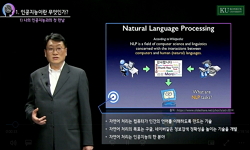This paper presents the details of Artificial Neural Network (ANN) based models to predict crack depth and remaining life of circumferentially part-through cracked piping components used in the nuclear industry. Crack growth data from experimental stu...
http://chineseinput.net/에서 pinyin(병음)방식으로 중국어를 변환할 수 있습니다.
변환된 중국어를 복사하여 사용하시면 됩니다.
- 中文 을 입력하시려면 zhongwen을 입력하시고 space를누르시면됩니다.
- 北京 을 입력하시려면 beijing을 입력하시고 space를 누르시면 됩니다.



Application of ANN concepts for prediction of crack growth and remaining life of circumferentially cracked piping components under different loading scenarios
한글로보기https://www.riss.kr/link?id=A109613320
-
저자
Murthy A. Ramachandra (CSIR-Structural Engineering Research Centre) ; Kale Divyansh (Shri Mata Vaishno Devi University, Katra) ; Saravanan M. (CSIR-Structural Engineering Research Centre) ; Vishnuvardhan S. (CSIR-Structural Engineering Research Centre)
- 발행기관
- 학술지명
- 권호사항
-
발행연도
2025
-
작성언어
English
- 주제어
-
등재정보
KCI등재,SCIE,SCOPUS
-
자료형태
학술저널
- 발행기관 URL
-
수록면
-
- DOI식별코드
- 제공처
-
0
상세조회 -
0
다운로드
부가정보
다국어 초록 (Multilingual Abstract)
This paper presents the details of Artificial Neural Network (ANN) based models to predict crack depth and remaining life of circumferentially part-through cracked piping components used in the nuclear industry. Crack growth data from experimental studies on (i) straight pipes made up of SA 312 Type 304 LN stainless steel having part-through circumferential notch under combined bending and torsion and (ii) dissimilar metal pipe weld joints having circumferential through-wall crack in the weld were used. The dissimilar metal pipe weld joint is made up of SA312 Type 304 LN austenitic stainless steel and SA508 Gr. 3 Cl. 1 low alloy carbon steel and joined by Nickel-rich Inconel alloy weld. About 75 % of the mixed experimental data has been used for development of model and the remaining data for validation. For the development of ANN model, (i) back propagation technique (ii) sigmoidal transfer functions and (iii) Levenberg-Marquardt algorithm are used. The maximum percentage difference observed between the predicted and the experimental results for crack depth and remaining life was 19.59 % and 15.78 % respectively. The efficiency of the developed model was verified using several statistical parameters. The developed models are useful for the structural integrity assessment of piping components under different loading scenarios.
동일학술지(권/호) 다른 논문
-
- 한국원자력학회
- Dharmadji Jessica Sujanto
- 2025
- KCI등재,SCIE,SCOPUS
-
Optimization of energy compensation layered structure of Geiger- Müller counters
- 한국원자력학회
- Li Fei
- 2025
- KCI등재,SCIE,SCOPUS
-
Airborne gamma radiation field simulation method based on finite element analysis
- 한국원자력학회
- Li Zikun
- 2025
- KCI등재,SCIE,SCOPUS
-
- 한국원자력학회
- Chen Sen
- 2025
- KCI등재,SCIE,SCOPUS




 KCI
KCI






